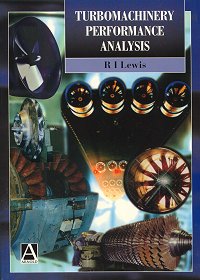
Home Page
Turbomachinery fluid dynamics
The design of most turbomachines involves:
(a) Selection of suitable duty coefficients to ensure acceptable blade loadings. (Namely the flow and work or loading coefficients).
(b) The selection of the most suitable annulus shape to convey the working substance smoothly through the blades.
(c) Detailed aerodynamic design of the individual blade profiles to produce the required energy exchange between rotor and fluid and thus to deliver the prescribed duty coefficients with maximum efficiency.
There has been a considerable interest in items (b) and (c) since the birth of the gas turbine engine and there are many Computational Fluid Dynamics (CFD) codes to achieve these crucial aspects of fluid dynamic design of turbomachines. The text opposite has been produced to show the importance of item (a), namely the influence of duty points upon both the selection and general performance analysis of turbomachines, and to provide a methodology for an integrated approach to the teaching of turbomachines at degree level or for graduate trainees, linking dimensional analysis to velocity triangle design and then on to detailed aerodynamic or fluid-dynamic design. The PC disk supplied with this text provides a powerful teaching tool for student turbomachinery design and project work.
Turbomachinery Performance Analysis
by R.I.Lewis
Published by Arnold 1996 (now available from Butterworth-Heinemann)
Click for further details of PC disk codes. Butterworth-Heinemann's web page on "Turbomachinery Performance Analysis"